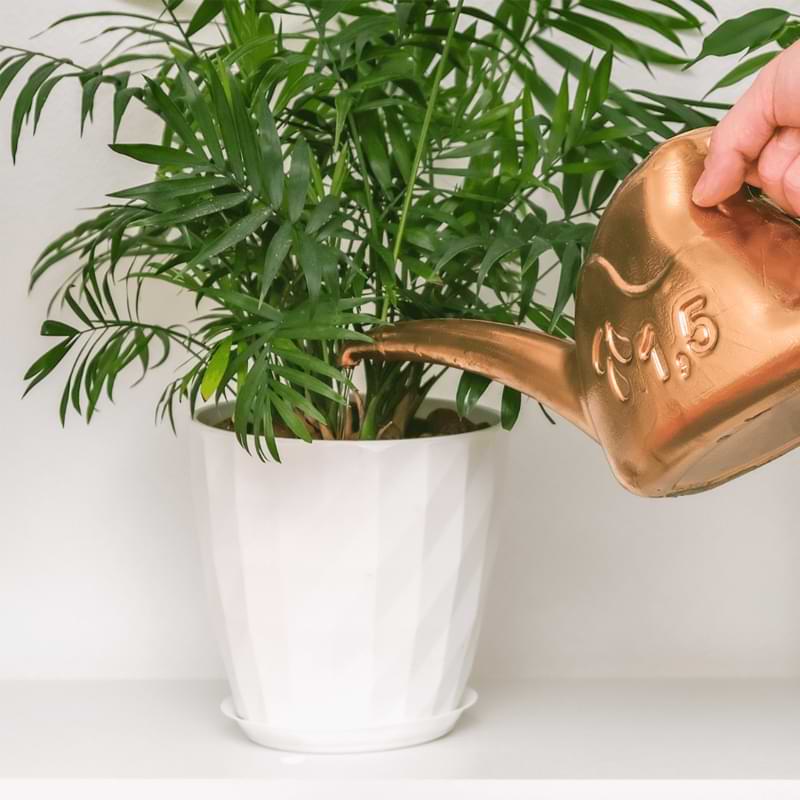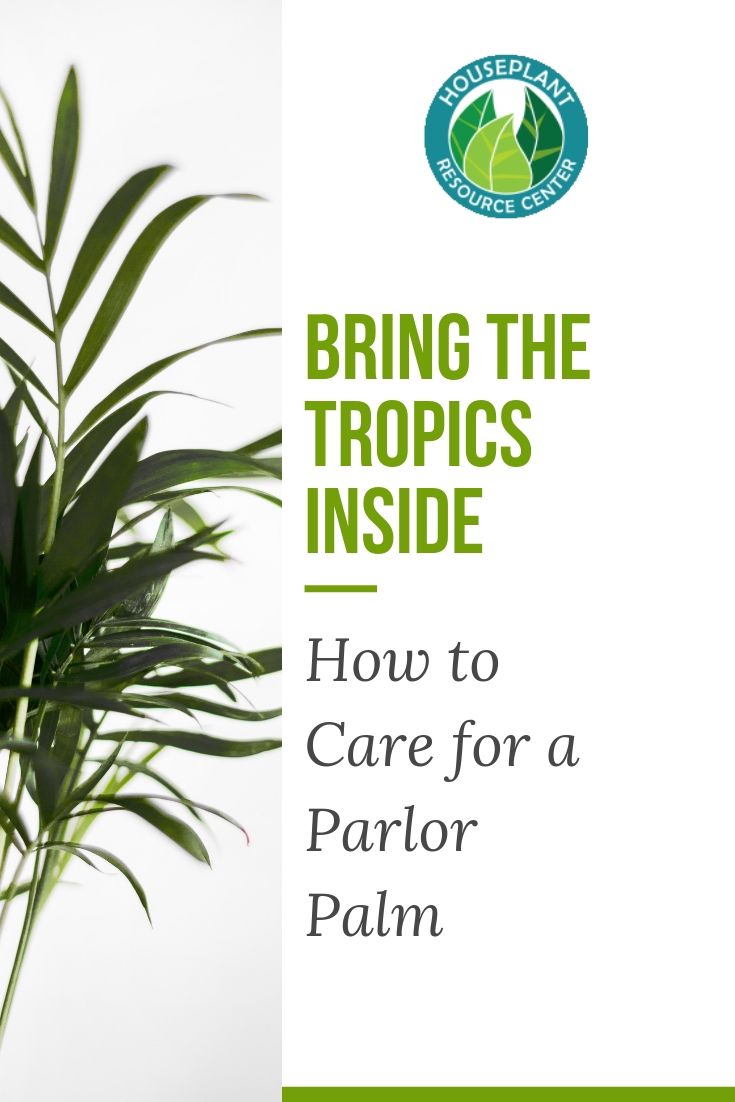Parlor Palms are super popular houseplants for several reasons. They bring a tropical, jungle-esque vibe to any space, they do well in lower light, and they’re fairly easy to care for.
They grow very slowly, and while they can reach six feet in the wild, they typically max out at three or four feet inside, which is a very manageable size. They’re also cheap to buy!
Table of Contents
History and Popularity of the Parlor Palm
Though native to the tropical rainforests of Central America, Chamaedorea Elegans (isn’t that a beautiful name?), AKA the Parlor Palm or Bella Palm, gained popularity as a houseplant in Victorian times when it was used to give an air of wealth and prosperity.
That’s also when it got the nickname of Parlor Palm. Can you think of a more Victorian-sounding name than that?
It’s still a classic houseplant today because of its beautiful, wispy leaves that are reminiscent of beach palms and tropical foliage. They provide a lot of visual impact for very little work! Most parlor palms grow in clumps with several plants in the same container. They don’t put out wide roots, so several plants actually get along well in a small space.
Parlor Palms also great at cleaning the air and are a safe choice for pet owners and parents because, they are non-toxic to animals and humans.

How to Care for a Parlor Palm
Soil and pots
Parlor Palms aren’t fussy about soil, so regular indoor potting mix should suffice. Choose a pot with good drainage because palms doesn’t like to sit in water.
Parlor Palms only requires repotting every two years or so because it grows so slowly, and you don’t want to repot often anyway because of the weak, delicate roots. If you hate repotting plants, this is a great choice!
Light
These plants are well-suited to indoor light because they thrive in the shade.
Place your palm near a north or east facing window, but not directly in the window. Shoot for at least a few feet away where it still casts a shadow but never receives direct sunlight. It might also do well deeper in the room, though if it shows signs of stress like yellowing or wilting, you can move it a little closer to the light.
Less light also means less growth, so try placing your palm farther from the window if you don’t want it to get much bigger.
Water
As with many plants, it’s far better to underwater your Parlor Palm than overwater.
Let the soil dry out a bit between waterings, though you don’t necessarily want it bone dry. This might take less time in the summer and more time in cooler temperatures. If the leaves turn yellow, that’s a sign that your plant needs a drink!
When the soil feels dry, water until water starts to run out the drainage holes and empty the drainage tray soon.
Water all the way around the base to make sure you get all the roots because you probably have several plants with different root systems in the same pot. You don’t want to get dry spots and kill one of those plants off!
Temperature
These plants do well in room temperatures between 65 and 80 degrees Fahrenheit, but they don’t like extreme cold. Keep them away from drafts, cooling vents, and cold doors or windows.
Pests
You do want to watch out for insects like scale, spider mites, and mealybugs on these plants, so inspect your plant every week or so for small brown or white dots, webbing, and other signs of bugs.
If you see webbing or insects, gently remove what you can with your fingers or tweezers and treat with a neem oil-based products or gentle insecticide.
Fertilizer
Fertilize with Indoor Plant Food every time you water, or even every other time. These plants grow slowly, so they don’t need a lot of fertilizer. But you also aren’t repotting often, so you don’t want the soil to become completely depleted of nutrients either.
Other Parlor Palm Care Tips:
- Palms like humidity (remember, they hail from rainforests), so you might want to think about a humidifier if you live in a very dry climate.
- Parlor Palms don’t like to be pruned, but if some of the fronds die, you can remove them without causing trouble.
Parlor Palms are a beautiful and low-maintenance plant to add to your collection, and these beautiful plants will make you feel like you’re living in a rainforest!




